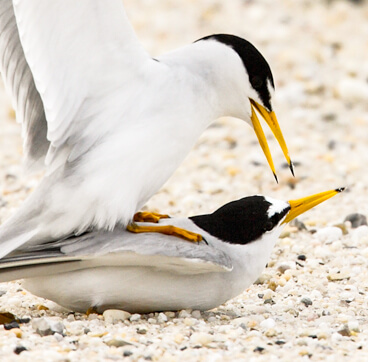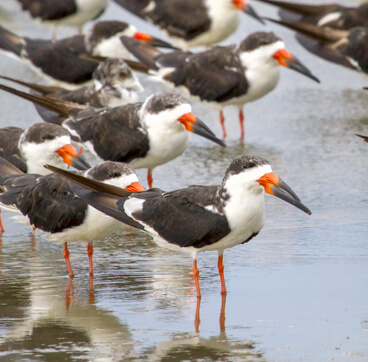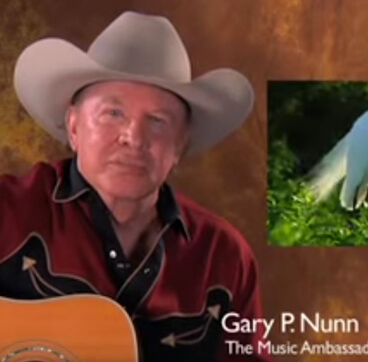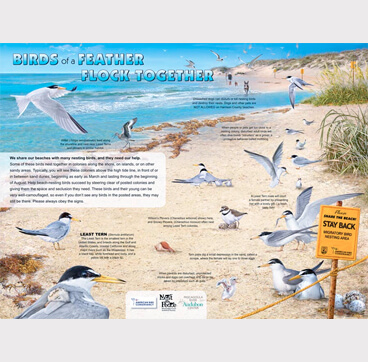Populations of Gulf Coast birds have seen a steady decline since the days John James Audubon fell in love with the area's abundant birdlife. For our "Fab Four" of Gulf Coast birds, the Black Skimmer, Least Tern, Snowy Plover, and Wilson's Plover, nesting on the beach is a huge challenge. Coastal development, off-road vehicles, beachgoers, and pets—along with disasters like Hurricane Katrina and the BP/Deepwater Horizon oil spill—equal a perfect storm of threats that endanger their very existence.
But our Gulf Coastal Birds Program is making a difference, working with partners across the Gulf and combining media outreach with physical protection, monitoring of nest sites, and on-the-ground educational activities to bring back beach-nesting birds. (Donate today to make a difference.)The results speak for themselves:

In Grand Isle, Louisiana in 2013, we observed approximately twice as many Least Tern breeding pairs and fledglings as we did in 2012—a change attributable to our regional protection, monitoring, and outreach programs run by experienced field biologists. Photo: Stubblefield Photography/Shutterstock.

In 2014, we discovered Snowy Plovers breeding on East Beach in Galveston, Texas. It had been five years since breeding for this species was documented on the highly populated upper coast of Texas. Through our conservation activities, Snowy Plovers had an 80 percent hatching success rate and fledged one chick per pair, an atypically high reproductive output. Photo: Katheryn Harris.

Our informational signage, education, and media efforts are changing how people view the beach: 75 percent of survey respondents in Texas said the presence of large groups of birds influenced their decision of how close to fish or recreate to those areas, compared to just 39 percent in 2012. Help us educate even more people by engaging with us on Facebook. Photo: Black Skimmers, Ivan Kuzmin/Shutterstock.

Our educational videos and public service announcements have encouraged thousands of viewers to share the beach with vulnerable beach-nesting birds. Featuring our own field biologists along with regional celebrities Gary P. Nunn and Tab Benoit, these products educate and inspire.

We have installed more than 50 interpretive signs in key sites across Alabama, Florida, Louisiana, and Texas, providing information on sensitive beach-nesting birds and how beach-goers can help them thrive. For example, our Black Skimmer sign helps visitors recognize the species and minimize threats to the breeding birds. More about our solutions.